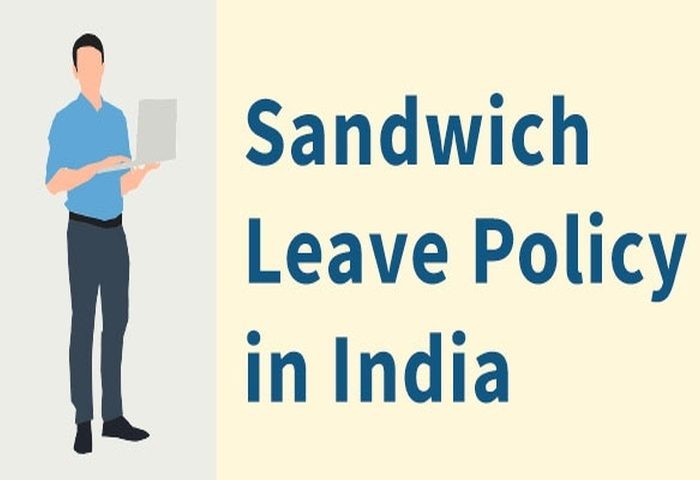Every company takes a distinct strategy to leave management. It can be everything from sandwich leave policy to unrestricted paid time off. Businesses think about implementing a sandwich strategy mostly because it prevents workers from scheduling lengthy leave periods. This lessens low team productivity and widespread absenteeism. It is easier for management and staff when your company has effective leave policies. Employees may be a little confused about the sandwich leave policy, but it’s not difficult to understand The advantages and disadvantages of sandwich leaves are thoroughly explained in this blog. Remarkably, sandwich leaves are criticized a lot and are referred to as “anti-employee experiences.” We will investigate further to determine whether these kind of leaves are beneficial or detrimental to businesses over the long term.
Concept of Sandwich Leave
Employees are prohibited from taking casual or personal leave in between planned holidays under a sandwich leave policy. If they do, whether they are national or public holidays, the holidays also count toward the leave balance. Let’s use a scenario to better comprehend this.
The national holiday for Independence Day, which falls on a Thursday, is August 15, 2024. Raksha Bandhan, which comes on the Monday after August 19th, is a public holiday in some Indian states. Assuming you take a leave of absence on Friday, August 16th, you should ideally be able to take a five-day vacation at the expense of using up just one leave balance. However, you would be charged for three leaves, including Independence Day and Raksha Bandhan, if your company has a sandwich leave policy.
The specifics of this policy vary based on the guidelines established by the organizations. If leaves are taken on Friday and Monday, some companies also cut leaves for Saturday and Sunday.
How the concept of sandwich leave work?
The sandwich leave policy is not standardized in Indian labor laws. Employers have the flexibility to create their own policies, including rules on sandwich leaves, as long as they comply with basic leave entitlements mandated by law.
To learn more about the legal considerations, read: How to create a leave policy?
The sandwich leave policy should be clearly defined in company rules and applied consistently. Specific provisions may vary by company, industry, and location.
The sandwich leave policy originated from factory work schedules, where productivity directly correlated with employee working hours.
Under this policy, employers may count intervening non-working days (like weekends) as part of the leave period when an employee takes time off before and after these days. For example:
If an employee takes leave on Friday and Monday, Saturday and Sunday might also be counted as leave days.
This practice is permissible if:
- It’s clearly stated in the employment contract or company policy.
- It’s consistently applied to all employees.
- Employees must accept this leave calculation if it’s part of their agreed-upon employment terms.
Components of a sandwich Leave policy
A sandwich leave policy is made up of three primary parts:
Goal: Specifies the goal of the sandwich leave policy, which is usually to offer recommendations for effectively managing leaves and preserving productivity.
Scope: Indicates which workers, divisions, or circumstances within the company are covered by the policy.
Describes the entitlement and calculation of sandwich leave, including which days are used and how it impacts leave balances.
Document exceptions: enumerates circumstances under which the policy might not be applicable. This covers unforeseen circumstances like wedding or sick leave. Additionally, it outlines the documentation needed for certain exceptions.
Advantages of sandwich leave
1. Preserves efficiency
The sandwich leave policy discourages fragmented leave periods, which helps to maintain regular production. This makes it possible for teams to more effectively divide and schedule tasks, guaranteeing that projects continue to proceed even in the event of team member absences.
2. Maintains business continuity
In order to help firms maintain operational continuity, the policy encourages employees to combine their leave. It lowers the frequency of work process start-stop disruptions. This is especially helpful for jobs involving interaction with customers or time-sensitive tasks.
3. Regulates expenses
The strategy discourages accruing leave, which can lead to extended absences that disrupt operations and are expensive to fill. This approach reduces indirect costs associated with decreased productivity and staff replacement in addition to direct leave-related charges.
4. Boosts client satisfaction
Businesses are able to offer consumers more consistent service when staff availability is more predictable and absenteeism is less dispersed. Better response times, better commitment fulfillment, and eventually increased customer satisfaction result from this.
Disadvantages of sandwich leave
1. Makes work-life balance less important
Employees may feel under pressure to use as many leave days as possible, which could deter them from taking shorter breaks when necessary. Stress building and a decline in general wellbeing may result from this.
Workers may begin delaying essential vacation time in order to prevent “wasting” leave days. In the end, those who have a poor work-life balance will be less productive.
2. Has mistrust toward workers
Adopting a sandwich leave policy may be interpreted as a lack of faith in the professionalism and judgment of staff members. If leave regulations are not tightly enforced, it could give the impression that the business believes workers would misuse them.
The sandwich leave policy may seem ethically insulting to a workforce that is primarily composed of Gen Z and millennials. The connection between an employer and employee may potentially suffer as a result.
More significantly, it promotes a culture of command-based leadership. The most recent frameworks for human resource development emphasize visionary leadership and believing in employees’ self-accountability. Organizational melancholy and dissatisfaction may be exacerbated by policies like as sandwich leave.
3. Decreases adaptability
Employees’ freedom to arrange their vacation time in accordance with their own requirements and preferences is restricted by the policy. Employees who have family obligations or who must take care of personal concerns that don’t always coincide with regular leave periods may find this decreased flexibility especially difficult.
4. Adds to the administrative load
HR and managers may have more administrative work to do if a sandwich leave policy is implemented and maintained. It entails more intricate leave computations, more stringent policy explanation communication requirements, and possible dispute resolution.


